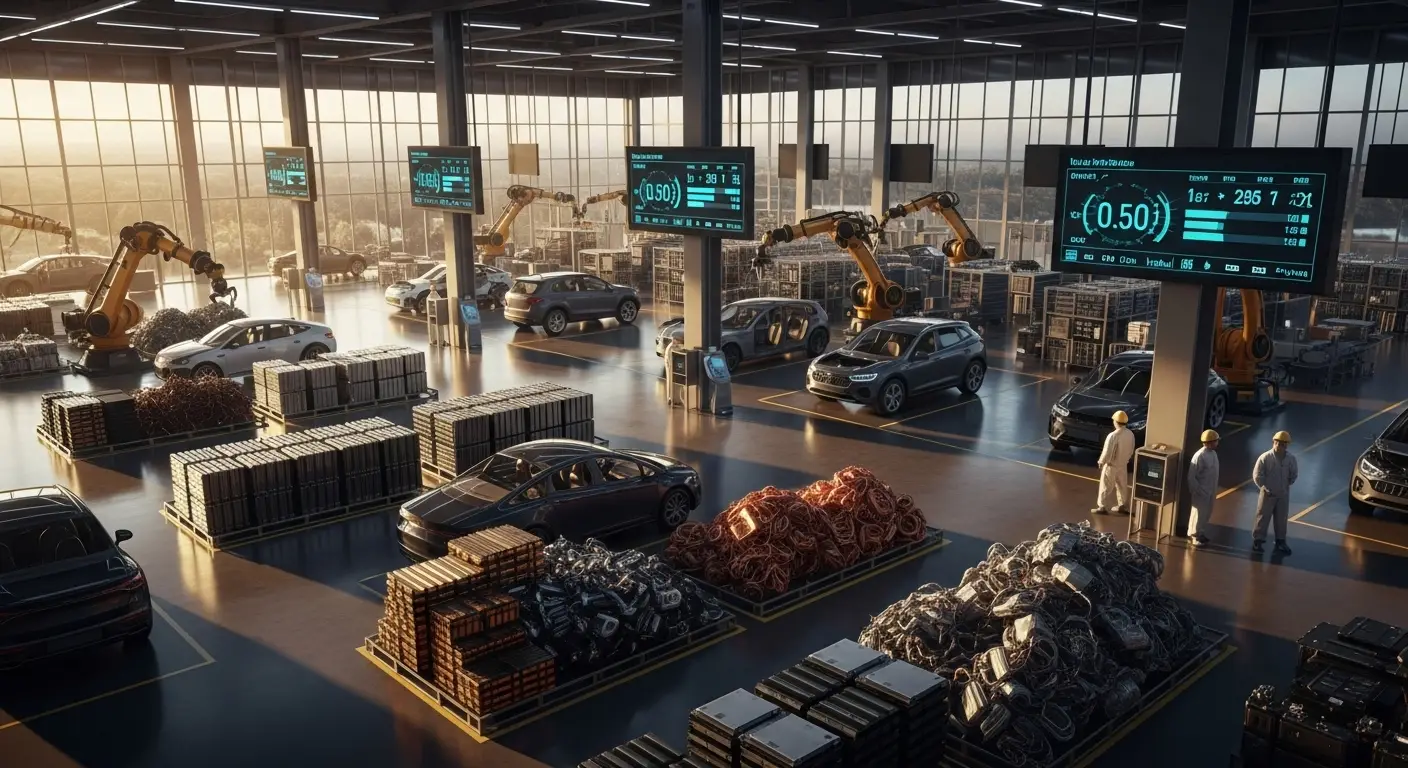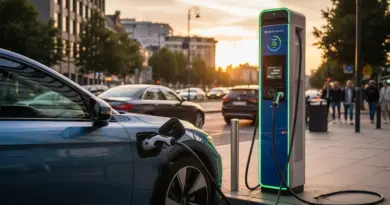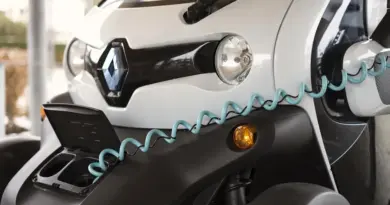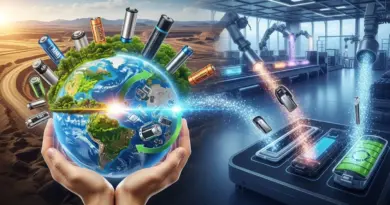Companies Competing in the Billion-Dollar EV Recycling Market
EV battery recycling companies are racing to capture a market projected to hit $23.7 billion by 2035, driven by surging electric vehicle adoption and the need to recover critical minerals like lithium and cobalt, ensuring sustainable supply chains amid global shortages.
With over 20 million EVs expected to be sold in 2025 alone, the influx of end-of-life batteries creates urgent demand for efficient recycling, where innovators like Redwood Materials and Li-Cycle lead by recovering up to 95% of materials, slashing mining needs and emissions by 70% compared to virgin extraction.
What is EV Battery Recycling and Why is it a Billion-Dollar Opportunity?
EV battery recycling involves collecting, dismantling, and processing used lithium-ion batteries from electric vehicles to extract valuable materials like lithium, cobalt, nickel, and graphite for reuse in new batteries. For beginners, think of it as turning “dead” batteries into fresh resources, preventing waste from piling up in landfills and reducing the environmental toll of mining. This process supports the circular economy, where waste becomes input for production, cutting costs and boosting sustainability. In 2025, as EV sales hit 20 million units globally, the volume of spent batteries is exploding—IEA forecasts 2 million metric tons of lithium-ion waste annually by year’s end—fueling a market valued at $4.9 billion this year, up from $3.88 billion in 2024.
The billion-dollar opportunity stems from resource scarcity and regulatory push. Critical minerals face supply crunches: lithium demand surges 30% yearly, with 70% of cobalt from unstable regions like the DRC. Recycling could supply 20-30% of needs by 2030, per MarketsandMarkets, while EU mandates 70% recovery of cobalt and nickel by 2030. Companies are vying for dominance through tech like hydrometallurgy, which recovers 95% of metals efficiently. Searches for EV battery recycling companies, EV recycling market, and lithium battery recycling reflect investor and consumer interest in this green gold rush, projected to grow at 40.9% CAGR to $23.72 billion by 2035.
The Surge in EV Adoption Driving the Recycling Boom
Electric vehicles are reshaping transportation, but their batteries—lasting 8-15 years—create a recycling imperative. Global EV stock reached 40 million in 2024, per IEA, with sales projected at 20 million in 2025 and 40 million by 2030. This boom generates massive waste: by 2030, 10% of road vehicles will be EVs, yielding millions of tons of batteries needing processing. Asia-Pacific leads with 60% market share, thanks to China’s 82% control of refined materials, but North America and Europe are catching up via incentives like the U.S. DOE’s $1 billion for recycling infrastructure.
For leigos, it’s simple: more EVs mean more batteries to recycle, turning a waste problem into profit. OEMs like Tesla and BMW are partnering with recyclers to close loops, ensuring recycled content in new packs—e.g., 16% cobalt in batteries by 2030 under EU rules. This competition among EV battery recycling companies is fierce, with startups and giants investing billions to secure feedstock and tech edges.
Key Players: Top Companies in the EV Battery Recycling Race
The EV recycling market is a battleground for established firms and agile startups. Leaders are scaling capacities, forging OEM ties, and innovating processes to outpace rivals. Here’s a spotlight on the frontrunners in 2025:
Redwood Materials: Pioneering Closed-Loop Systems
Founded by Tesla co-founder JB Straubel, Redwood Materials dominates North America with facilities processing 20 GWh annually. It recovers 95% of nickel, cobalt, and lithium, supplying materials for 1 million EVs in 2025 via a $2 billion DOE loan. Recent Toyota partnership creates U.S. closed-loops, emphasizing low-carbon refining.
Pros:
- High recovery rates minimize waste.
- Strong OEM integrations ensure steady supply.
- Scalable to 5 million EVs by 2030.
Cons:
- Heavy reliance on U.S. incentives.
- High initial capex for expansion.
Li-Cycle: Global Expansion with Spoke-and-Hub Model
Canadian-based Li-Cycle uses its patented model to process 81,000 tonnes yearly, expanding to Europe and Asia. It hit 95% recovery in 2025 trials, partnering with Volkswagen for circular supply. A $250 million SPAC merger accelerates Texas plant buildout.
Pros:
- Efficient, low-emission hydrometallurgy.
- Broad feedstock from EVs and electronics.
- Targets 100,000 tonnes by 2026.
Cons:
- Exposure to mineral price volatility.
- Logistics challenges in international scaling.
Umicore: Europe’s Hydrometallurgy Leader
Belgian giant Umicore expanded Belgian capacity in June 2025, deploying advanced processes for 125,000 tons annually. It supplies battery-grade materials to Stellantis, hitting 98% cobalt recovery. Focus on cathode innovation positions it for LFP and NMC shifts.
Pros:
- Decades of metal refining expertise.
- EU-compliant, with digital passports by 2027.
- Diversified beyond EVs to electronics.
Cons:
- Higher processing costs vs. pyrometallurgy.
- Geopolitical risks in global sourcing.
CATL (Contemporary Amperex Technology Co.): China’s Supply Chain Titan
The world’s top battery maker, CATL integrates recycling via subsidiary Brunp, targeting 40% recycled content by 2030. In 2025, it launched a $1.4 billion plant for EV and storage reuse, recovering lithium for in-house production.
Pros:
- Vertical integration cuts costs 20-30%.
- Massive scale in Asia’s EV hub.
- R&D in cobalt-free tech.
Cons:
- U.S.-China trade tensions limit exports.
- Environmental scrutiny on operations.
GEM Co., Ltd.: Asia’s High-Volume Processor
Chinese firm GEM leads with hydrometallurgical plants recycling millions of tons, partnering with Hyundai for nickel recovery. 2025 expansions hit 500,000 tons capacity, focusing on LFP batteries.
Pros:
- Cost-effective at scale.
- Strong ties to Asian OEMs.
- 90%+ metal yields.
Cons:
- Regulatory hurdles in exports.
- Competition from domestic rivals.
Ascend Elements: Direct Recycling Innovator
U.S. startup Ascend commissioned its first commercial line in September 2025, using direct methods to preserve cathode structures, cutting costs 50% vs. traditional. It supplies Ford, targeting 100,000 tons by 2028.
Pros:
- Energy-efficient, low-waste process.
- High-purity outputs for premium batteries.
- Backed by $500 million funding.
Cons:
- Early-stage scaling risks.
- Limited to specific chemistries.
Northvolt: Sweden’s Green Pioneer
Northvolt’s Revolt Ett facility in Sweden processes 125,000 tons yearly since July 2025, recovering materials for EU EV production. Partnerships with BMW emphasize carbon-neutral ops.
Pros:
- Fully renewable-powered plants.
- Focus on European localization.
- Integrated with gigafactory.
Cons:
- Higher European labor costs.
- Weather-dependent renewables.
American Battery Technology Company (ABTC): U.S. Scrap Specialist
ABTC leverages Tesla Gigafactory experience for lithium recovery, processing manufacturing scrap. 2025 Nevada expansions target 20,000 tons, with DoD contracts.
Pros:
- Handles pre-consumer waste efficiently.
- Government-backed for security.
- Low-cost hydrothermal tech.
Cons:
- Smaller scale vs. globals.
- Dependency on U.S. manufacturing.
Other notables include Retriev Technologies (U.S., lead-acid to LIB shift), Panasonic Energy (Japan, municipal collections), and Glencore (Switzerland, mining-recycling hybrid).
For comparison:
| Company | Capacity (2025, tons/year) | Key Strength |
|---|---|---|
| Redwood Materials | 20 GWh equiv. | Closed-loop with OEMs |
| Li-Cycle | 81,000 | Global hubs |
| Umicore | 125,000 | High-purity cathodes |
| CATL | 500,000+ | Vertical integration |
| GEM Co. | 500,000 | Cost efficiency |
Technologies Powering the EV Recycling Competition
EV battery recycling companies differentiate via methods: pyrometallurgy (high-heat, good for cobalt but energy-hungry), hydrometallurgy (acid leaching, 95% recovery), and direct recycling (structure-preserving, emerging). In 2025, AI sorting and bioleaching cut costs 30%, per IDTechEx. Innovations like Ascend’s direct process rival mining economics, while Redwood’s refinement yields battery-grade outputs.
Challenges include mixed chemistries (LFP vs. NMC) complicating feeds, but solutions like modular plants adapt. By 2030, tech could hit 99% recovery, per IRENA.
Market Growth Projections and Regional Dynamics
The EV recycling market explodes: from $4.9 billion in 2025 to $42.8 billion by 2034 (27.3% CAGR), per ResearchAndMarkets. Asia-Pacific holds 60%, led by China; Europe grows fastest at 32% via mandates; U.S. hits $10.35 billion by 2029. Drivers: 240 million EVs by 2030, mineral shortages. Volatility in prices (lithium down 80% post-2022) tests margins, but subsidies stabilize.
Pros and Cons of Competing in the EV Recycling Market
Pros:
- Massive growth: 40%+ CAGR amid EV boom.
- Sustainability edge: Reduces mining emissions 40-60%.
- Revenue from materials: Recycled lithium 20-40% cheaper.
- Policy tailwinds: $1B+ global incentives.
- Job creation: 10 million roles by 2030.
Cons:
- High capex: $100M+ per facility.
- Low collection: Only 5-10% batteries recycled.
- Tech hurdles: Varying chemistries raise costs.
- Geopolitics: Supply chain concentrations risk disruptions.
- Economic swings: Mineral price drops hurt viability.
Future Outlook: Consolidation and Innovation Ahead
By 2030, EV battery recycling companies will consolidate via mergers (e.g., Li-Cycle’s SPAC), with OEMs like Ford and Toyota owning stakes for security. AI and robotics will dominate sorting, hitting 30% secondary supply. Challenges like infrastructure gaps persist, but a $50 billion circular value by 2050 beckons winners.
FAQs
What is the projected size of the EV battery recycling market in 2035?
The market is expected to reach $23.72 billion by 2035, growing at a 40.9% CAGR from 2024, driven by rising end-of-life batteries from 20 million annual EV sales in 2025.
Which company leads in EV battery recycling capacity in 2025?
Redwood Materials processes equivalent to 20 GWh annually, supplying materials for 1 million EVs through closed-loop systems and OEM partnerships.
How does hydrometallurgy benefit EV recycling companies?
It achieves 90-98% metal recovery at lower temperatures than pyrometallurgy, reducing emissions and costs for firms like Umicore and GEM Co.
What role do government policies play in the EV recycling market?
EU mandates 70% cobalt/nickel recovery by 2030, while U.S. DOE’s $1B investments boost infrastructure, aiding companies like Li-Cycle.
Can startups compete with giants in EV battery recycling?
Yes, like Ascend Elements, whose direct recycling cuts costs 50%, securing Ford deals and scaling to 100,000 tons by 2028.
What percentage of critical minerals can recycling supply by 2030?
Up to 20-30% globally, easing shortages as EV waste hits 10 million tons, per IEA forecasts.




